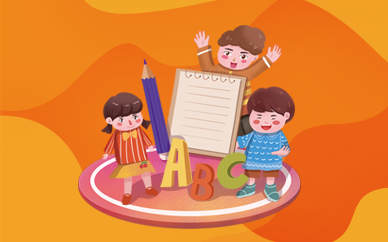《艺术教育的传统功能及其在当今时代的新作用》摘要
上海音乐学院 邱曙苇
 (相关资料图)
(相关资料图)
摘要
艺术教育一直被视为培养学生创造性思维和审美能力的重要途径。传统上,艺术教育的功能主要包括提供技术和技能,培养创造力和创新能力,以及传授文化和历史知识。然而,在当今数字时代,艺术教育的新功能正在不断浮现,如发掘新型艺术表现形式和媒介,促进跨学科合作,以及培养数字素养和社交技能。本文将探讨艺术教育的传统功能及其在当今时代的新作用,并强调艺术教育对学生全面发展的重要性。
关键词:艺术教育,创造性思维,审美能力,数字时代,新型艺术表现形式,跨学科合作,数字素养,社交技能。
介绍
艺术教育是全面教育的重要组成部分。 它已被公认为培养学生创造性思维和审美能力的重要途径。 传统上,艺术教育的主要功能包括提供技术技能和知识,培养创造力和创新精神,以及传授文化和历史知识。 然而,在当今的数字时代,艺术教育承担了超越其传统功能的新角色和责任。 本文将探讨艺术教育的传统功能及其在当今时代的新作用,强调艺术教育对学生全面发展的重要性。
艺术教育的传统功能
艺术教育的传统功能可以追溯到文艺复兴时期,当时艺术被认为是教育的重要组成部分。 艺术教育的主要功能之一是提供技术技能和知识。 学生学习各种艺术形式、技术和媒介,以及如何有效地使用它们来创造艺术。 艺术教育还通过鼓励学生尝试新的艺术创作理念和方法来培养创造力和创新。 通过艺术教育,学生还可以了解艺术的文化和历史意义,以及它是如何随着时间的推移而演变的。
数字时代艺术教育的新角色
在数字时代,艺术教育承担了新的角色和责任。 艺术教育最重要的新作用之一是探索新的艺术表现形式和媒体。 随着数字技术的出现,学生可以使用新的工具和技术,使他们能够以令人兴奋的新方式创作艺术。 从数字绘画和动画到虚拟现实和增强现实,艺术教育正在帮助学生探索艺术的新领域。
数字时代艺术教育的另一个新作用是促进跨学科合作。 艺术教育可以将来自科学、技术、工程和数学等不同研究领域的学生聚集在一起,共同开展融合多学科的创造性项目。 这种方法可以培养创新和解决问题的能力,因为学生学会跳出框框思考并与他人有效合作。
此外,艺术教育对于培养数字素养和社交技能变得越来越重要。 随着社交媒体和在线交流的兴起,学生需要学习如何使用数字平台并以负责任和尊重的方式与他人互动。 艺术教育可以帮助学生培养在数字世界中有效沟通所需的技能,同时培养同理心、团队合作和领导能力。
总之,长期以来,艺术教育一直被认为是全面教育的重要组成部分,其传统功能包括提供技术技能和知识、培养创造力和创新精神以及传授文化和历史知识。 然而,在数字时代,艺术教育承担了新的角色和责任,例如探索新的艺术表现形式和媒体,促进跨学科合作,培养数字素养和社交技能。 必须认识到艺术教育对学生全面发展的重要性,并继续发展和调整艺术教育计划以满足数字时代学生不断变化的需求。 通过这样做,我们可以帮助学生培养在瞬息万变的世界中取得成功所需的技能和知识,同时培养对艺术及其在我们生活中所扮演角色的更深刻的欣赏。
此外,艺术教育的好处超出了课堂。 研究表明,参加艺术教育计划的学生学业成绩更高,认知和社交情感发展得到改善,学校参与度也更高。 随着学生了解不同的艺术传统和文化观点,艺术教育在培养文化理解和欣赏方面也发挥着关键作用。
鉴于这些好处,必须确保艺术教育仍然是教育系统的一个组成部分,并有足够的资金和资源来支持高质量的项目。 这包括为各种背景和能力的学生提供艺术教育机会,以及支持艺术教育工作者的专业发展,以确保他们具备在数字时代有效教学所需的技能和知识。
总之,艺术教育的传统功能,如提供技术技能和知识、培养创造力和创新精神以及教授文化和历史知识,在数字时代仍然至关重要。 然而,艺术教育也承担着新的角色和责任,包括探索新的艺术表现形式和媒体、促进跨学科合作以及发展数字素养和社交技能。 艺术教育的好处超出了课堂,包括提高学业成绩、认知和社会情感发展以及文化理解和欣赏。
尽管艺术教育有很多好处,但它继续面临挑战和障碍,包括预算削减和资源有限。 必须提高公众对艺术教育价值的认识,倡导将其纳入教育体系,并提供资金和资源来支持高质量的项目。 艺术教育应被视为全面教育的重要组成部分,并与其他核心科目一起融入课程。
在数字时代,必须发展和调整艺术教育计划以满足学生不断变化的需求,同时还要保留几个世纪以来对艺术教育至关重要的传统功能。 通过这样做,我们可以帮助学生培养在瞬息万变的世界中取得成功所需的技能和知识,同时培养对艺术及其在我们生活中所扮演角色的更深刻的欣赏。
Introduction
Art education is an essential component of a well-rounded education. It has been recognized as an important way to develop students' creative thinking and aesthetic abilities. Traditionally, the main functions of art education include providing technical skills and knowledge, fostering creativity and innovation, and teaching cultural and historical knowledge. However, in today's digital age, art education has taken on new roles and responsibilities that go beyond its traditional functions. This paper will explore the traditional functions of art education and its new roles in the current era, emphasizing the importance of art education in the overall development of students.
Traditional Functions of Art Education
The traditional functions of art education can be traced back to the Renaissance era, where the arts were considered an essential part of education. One of the primary functions of art education is to provide technical skills and knowledge. Students learn about various art forms, techniques, and mediums, and how to use them effectively to create art. Art education also fosters creativity and innovation by encouraging students to experiment with new ideas and approaches to art-making. Through art education, students also learn about the cultural and historical significance of art, and how it has evolved over time.
New Roles of Art Education in the Digital Age
In the digital age, art education has taken on new roles and responsibilities. One of the most significant new roles of art education is to explore new forms of artistic expression and media. With the advent of digital technology, students have access to new tools and techniques that allow them to create art in new and exciting ways. From digital painting and animation to virtual reality and augmented reality, art education is helping students to explore new frontiers in art.
Another new role of art education in the digital age is to promote interdisciplinary collaboration. Art education can bring together students from different fields of study, such as science, technology, engineering, and mathematics, to work together on creative projects that integrate multiple disciplines. This approach can foster innovation and problem-solving skills, as students learn to think outside the box and collaborate effectively with others.
In addition, art education is becoming increasingly important for developing digital literacy and social skills. With the rise of social media and online communication, students need to learn how to navigate digital platforms and interact with others in a responsible and respectful manner. Art education can help students develop the skills they need to communicate effectively in the digital world, while also fostering empathy, teamwork, and leadership.
In conclusion, art education has long been recognized as a vital component of a well-rounded education, with traditional functions that include providing technical skills and knowledge, fostering creativity and innovation, and teaching cultural and historical knowledge. However, in the digital age, art education has taken on new roles and responsibilities, such as exploring new forms of artistic expression and media, promoting interdisciplinary collaboration, and developing digital literacy and social skills. It is essential to recognize the importance of art education in the overall development of students, and to continue to evolve and adapt art education programs to meet the changing needs of students in the digital age. By doing so, we can help students develop the skills and knowledge they need to succeed in a rapidly changing world, while also fostering a deeper appreciation for the arts and the role they play in our lives.
Furthermore, the benefits of art education extend beyond the classroom. Studies have shown that students who participate in art education programs have higher levels of academic achievement, improved cognitive and social-emotional development, and increased engagement in school. Art education also plays a critical role in fostering cultural understanding and appreciation, as students learn about different artistic traditions and cultural perspectives.
In light of these benefits, it is essential to ensure that art education remains an integral part of the education system, with adequate funding and resources to support high-quality programs. This includes providing access to art education for students of all backgrounds and abilities, as well as supporting the professional development of art educators to ensure they have the skills and knowledge needed to effectively teach in the digital age.
In conclusion, the traditional functions of art education, such as providing technical skills and knowledge, fostering creativity and innovation, and teaching cultural and historical knowledge, continue to be essential in the digital age. However, art education is also taking on new roles and responsibilities, including exploring new forms of artistic expression and media, promoting interdisciplinary collaboration, and developing digital literacy and social skills. The benefits of art education extend beyond the classroom, including improved academic achievement, cognitive and social-emotional development, and cultural understanding and appreciation.
Despite the many benefits of art education, it continues to face challenges and obstacles, including budget cuts and limited resources. It is essential to increase public awareness of the value of art education, advocate for its inclusion in the education system, and provide funding and resources to support high-quality programs. Art education should be viewed as an essential component of a well-rounded education and integrated into the curriculum alongside other core subjects.
In the digital age, it is essential to evolve and adapt art education programs to meet the changing needs of students, while also preserving the traditional functions that have been essential to art education for centuries. By doing so, we can help students develop the skills and knowledge they need to succeed in a rapidly changing world, while also fostering a deeper appreciation for the arts and the role they play in our lives.
关键词:
艺术教育
提供技术
表现形式
